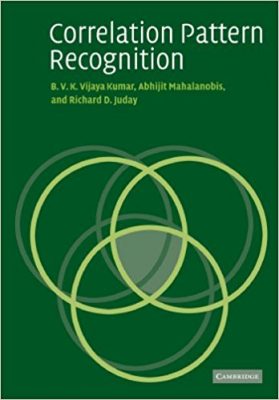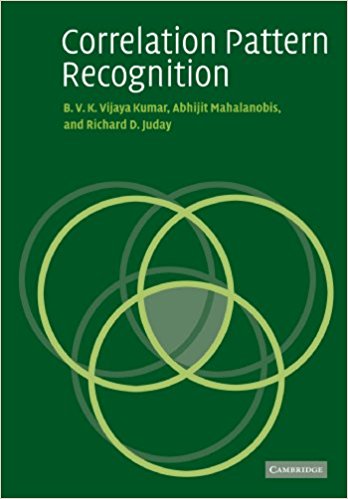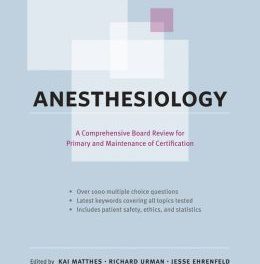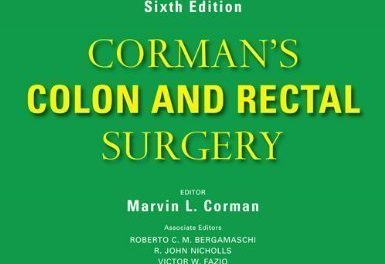 Authors: B.V.K. Vijaya Kumar, Abhijit Mahalanobis, and Richard D. Juday
Authors: B.V.K. Vijaya Kumar, Abhijit Mahalanobis, and Richard D. Juday
Publisher: Cambridge University Press – 390 pages
Book Review by: Venkat Subramaniam
Correlation pattern recognition is a field of study that has various practical applications, the most well-known or common of which are:
- Automatic target recognition
- Biometric recognition
- Optical character recognition
Automated target recognition: An example of automatic target recognition (ATR) is the ability for an algorithm or a device to recognize target objects based on data obtained from sensors.
According to an article in Wikipedia, target recognition was initially done by using an audible representation of the received signal. In this instance, a trained operator would decipher the sound to classify the target illuminated by the radar.
While humans such as trained operators had success in identifying and classifying targets, automated methods were later developed to obtain more accuracy and speed in identification and classification of targets.
Automated target recognition is used to not only identify man-made objects such as air and ground vehicles like airplanes and cars, but also living beings such as people, various types of animals, and plants and trees. ATR has been used in a wide range of operations such as recognizing an object on a battlefield to filtering out interference caused by a large flock of birds on Doppler weather radar.
Military applications of ATR include simple identification such as IFF (identification: friend or foe)? transponder and an unmanned aerial vehicles (UAV) such as a drone. Another type of a UAV is a guided cruise missile that has been programmed to remain in the atmosphere flying at a constant speed and to hit terrestrial targets with high precision.
Biometric recognition is an automated method used primarily for security purposes. It is the ability of a device to identify a living person and authenticate or verify that it is indeed him or her, based on anatomical, behavioral and physiological characteristics. These include: DNA, facial images, features of the eye including the iris, pupil, and retina; fingerprints, odor or scent, and voice recognition.
Biometric recognition is classified into several groups using different types and kinds of devices. They include:
- Auditory biometric devices – analyze the voice to determine the identity of the speaker
- Be3havioral biometric devices – analyze the walking pattern and other patterns
- Chemical biometric devices – analyze the segments of the DNA to grant access to users
- Olfactory biometric devices – analyze odor to distinguish between users
- Visual biometric devices – analyze the features of the eye and the face
Optical character recognition is the ability of a device to recognize objects, particularly the characters of an alphabet, and “read” what it “sees”. This is a complex topic discussed in chapter 7 of this book entitled Optical Considerations. In the Introduction to this chapter – which we urge you to read closely as this is a difficult subject – the authors write:
“In this chapter we will consider how light is used to carry and process information. To perform correlation pattern optically, we begin with coherent light with the right beam characteristics. We impress a signal upon the beam with one spatial light modulator (SL), alter the propagation of the beam with a second SLM so that information is preferentially passed through the system and gathered at a location in the output plane, and detect and identify any information that might have been on the input beam.”
The chapter examines coherent light sources, SLMs, noise, and detection methods. Polarization of light is of particular interest, since many of the extant SLMs operate by altering the polarization of light.
In their effort to explore and discus the subject of correlation pattern recognition, the authors
B.V.K. Vijaya Kumar, Abhijit Mahalanobis, and Richard D. Juday cover many related topics in nine chapters, which we name below to give you an overview of the contents of this book:
- Introduction
- Mathematical Background
- Linear Systems and Filtering Theory
- Detection and Estimation
- Correlation Filter Basics
- Advanced Correlation Filters
- Optical Considerations
- Limited-Modulation Filters
- Application of Correlation Filters
They write that correlation is a “robust” technique, and they elaborate on various algorithms used in pattern recognition, providing the formulas that support it., as well as various types of background information, including:
- Detection and estimation theory
- Digital signal processing
- Linear systems theory
- Matrix / vector methods
- Optical processing
- Random variables
This is an excellent, well-written and well-supported resource on correlation pattern recognition that contains state-of-the art technology and case studies of important present-day interest, such as on biometrics.
Authors:
B.V.K. Vijaya Kumar has been a faculty member of the Department of Electrical and Computer Engineering at Carnegie Mellon University since 1982 and was made a Full Professor in 1991.He is a member of the IEEE and a fellow f the SPIE and OSA. He has authored or coauthored seven book chapters and over 350 technical papers.
Abhijit Mahalanobis is a Principal Research Engineer at Lockheed Martin, Orlando, and is technical lead for the Automatic Target Recognition program in the Research and Technology Group. He is a fellow of the SPIE and is responsible for over 100 journal and conference publications.
Richard D. Juday retired from NASA after 35 years of varied technical work, including several forms of digital and optical processing. His several patents concentrate on image processing by both of these means. He is a fellow of the SPIE and a member of the OSA.







